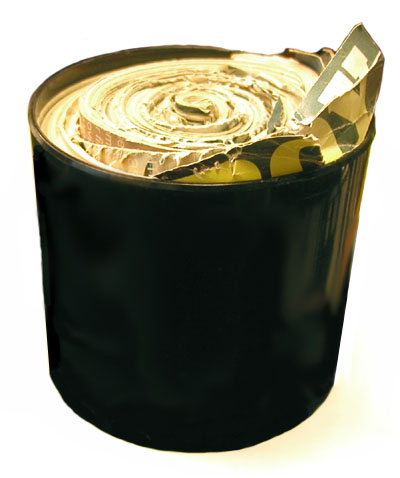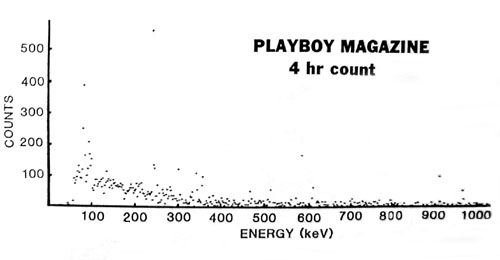Glossy Paper

For decades, glossy paper, the type used in magazines, was made using a white clay called kaolin (named after the Chinese region Kao-Ling where it was mined to produce porcelain). The clay is used to fill the spaces between the fibers in the paper and to coat the paper so that it will have a smooth surface. This makes the paper more suitable for the reproduction of photographs, especially color photos.
Kaolin has other uses (e.g., as a filler in paint and plastic, and as the active ingredient in antidiarrhea medicine), but its largest use is in the paper industry. This might change. There seems to be a gradual move towards the use of less expensive calcium carbonate. The state of Georgia is concerned because it is the world's single largest producer of kaolin. As a result, kaolin is sometimes referred to there as "white gold."
Since kaolin contains elevated levels of the uranium and thorium decay series, glossy magazines have a higher radioactive content than ordinary paper. The activity of such magazines is not high enough to be detected with a simple survey meter, but it is possible that a truck with a load of magazines could trip a radiation monitor.
To permit a quantitative analysis of the radiation exposures associated with reading glossy magazines, I collected a variety of them (e.g., Time, Cosmopolitan, TV Guide, etc.) and cut them up into strips so that they would fill a half-liter Marinelli beaker. The various magazines weighed anywhere from 125 to 500 grams each.
Not that it mattered, but only one type of magazine, e.g., Time, was used in a given Marinelli.

The analysis was performed with a high-purity germanium detector over a four hour period and a background spectrum was subtracted out. The analyses indicated that the various members of the uranium series were present in concentrations of 0.15 to 0.35 picocuries per gram of magazine (pCi/g). The members of the thorium series were present at concentrations of 0.3 to 0.6 pCi/g. Based on these measurements, I calculated that someone reading a 400 gram magazine would receive an exposure of approximately 1.5 x 10-3 microrem per hour (urem/hr).
At about the same time that this was going on, I happened to be in need of a particular health physics report and was searching through a stack of documents in our office "library." Half way through the stack I discovered a Playboy magazine. Of course, my immediate reaction was to find out who owned it so that I could obtain their permission to cut it up for an analysis. Surprisingly, none of the people who worked there had ever seen it before. There was one other stroke of luck: the magazine was just the right size to fill the Marinelli (see top photo), another issue was not required. The resulting spectrum is shown above. You can make out the 93 keV gamma of Th-234, the 238 line of Pb-212, the 583 keV peak of Tl-208, the 609 keV peak of Bi-214, the 911 keV peak of Ac-228, etc., etc.
The day after it was counted, we had a health physicist come to visit, so I took him to the lab to see the Playboy spectrum—it was still on the multichannel analyzer. He shall remain nameless since he has denied publicly that the following ever occurred.
When he saw the spectrum, he was extremely interested, and when I told him the estimated exposure rate from reading Playboy, his jaw dropped and he asked "What's the critical organ?"*
*In the "old" days, the critical organ was the body tissue of most concern when an individual received a radiation exposure.
